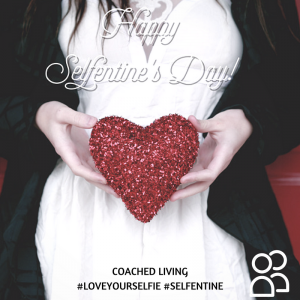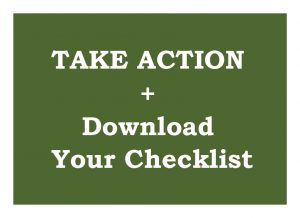 even closer than blood relatives. One popular trend is taking a Framily Vacation – which can include a mix of friends and family or even all girls “girls’ trip” or “bro-cation” if it’s an all-male trip.
even closer than blood relatives. One popular trend is taking a Framily Vacation – which can include a mix of friends and family or even all girls “girls’ trip” or “bro-cation” if it’s an all-male trip.Life Coaching
Tips for a Blissful “Framily” Vacation
 even closer than blood relatives. One popular trend is taking a Framily Vacation – which can include a mix of friends and family or even all girls “girls’ trip” or “bro-cation” if it’s an all-male trip.
even closer than blood relatives. One popular trend is taking a Framily Vacation – which can include a mix of friends and family or even all girls “girls’ trip” or “bro-cation” if it’s an all-male trip.Galentine, Valentine, Selfentine?
Do you cringe when you think about Valentine’s Day? It’s okay. Many, even in healthy relationships, don’t love the pressure the holiday can bring. Roses, fancy dinner, romantic card? For singles, the day can be a reminder that they haven’t found a match or renews pain over a recent break-up. 
While Valentine’s Day likely hailed from a drunken fertility feast called Lupercalia in ancient Rome, it became much sweeter over time and morphed into what it is today thanks to Hallmark back in 1913 in their effort to get lovebirds to buy their cards instead of the traditional homemade cards that had been around since the Middle Ages. With the commercialization of Valentine’s Day, it seems every industry tries to capitalize on it, making the holiday sales top around $18 billion this year. Yes, that’s with a “b”.
Then there’s Galentine’s Day, which started based on the character Leslie Knope from Parks and Rec back in 2010 celebrating female friendship on Feb. 13th. Brands were quick to jump on this unofficial holiday as well. As a friendship coach, I love the idea of honoring your friends this week. Research shows that those with close friendships are happier and even live longer!
And yet…what if you are an introvert or you just don’t really want to celebrate by going out or having a bunch of people in? My brilliant, lovely daughter, Jessica, who shares a lot of my introvertedness (new word!) gave me this idea about celebrating “Selfentine’s Day.” Those who are single celebrate “Single Awareness Day”(SAD, which isn’t an uplifting acronym, is it?) in lieu of Valentine’s and use the day as a treat yourself day, which is great, but the nice thing is you don’t have to be single to celebrate Selfentine’s Day! It’s a day to empower yourself to gift and give yourself the kind of day you would like, putting no pressure on a mate if you have one, or girlfriends – just you!
It might look like one of my favorite topics; extreme self-care. We each have our own preferences but here are some ideas to get you started.
- Start this special day with treating yourself to a massage. Make it a good one, maybe splurge on a spa day. You could add a facial, get your nails done, spend some time in the sauna or ice room. Whatever you enjoy! (Even better you don’t have to make the day fall on Valentine’s Day – schedule it for Saturday or Sunday to give yourself more free time!)
- Prepare your favorite dinner and set the table complete with candles and fancy dishes. Add soft music in the background and you have yourself a very nurturing environment for your Selfentine’s dinner. Take your time eating. Savor every bite.
- Read a book for pleasure. Put away all those books and articles you’ve saved up for work, they are for another time. Find a nice comfy place to sit, with your favorite throw or blanket nearby, maybe a cup of tea or your favorite beverage, and indulge! Let yourself be swept away in the story you are reading – phone in another room so as not to get distracted.
- Find a movie on Netflix or your favorite channel – guilty pleasure viewing. Put on your comfy PJs, stock your coffee table with Godiva and wine or buttery popcorn. Don’t hold back.
- If the weather is cold where you live, build a fire in your fireplace, put some music on, and have a dance party in your living room! Crank. It. Up.
- If the weather is warm where you live, go on a nature walk, breathe in the fresh air. Notice the wildlife and the landscape. Allow yourself to feel, really feel the appreciation for all that you are and all that you have.
As a life coach, the place that I begin is with YOU, the individual. Your dreams. Your personality. Your passions. It’s up to you! You can opt out of a holiday or even celebrate all three – Galentine’s, Valentine’s and Selftine’s. I’d love to see you share your activities with a fun post on Instagram with the hashtags #loveyourselfie and #selfentine. Remember to tag @coachedliving so I’ll find it easily. I’ll pick a winner on Feb. 15th to win a $10 Starbucks gift card.
They all begin in the same place – loving yourself first. No matter which one you are celebrating, be sure to make it special. If you’d like to learn more about working with a life coach to navigate the journeys through love (all sorts), friendship and careers, contact me to find out more about one-on-one coaching and group coaching.
Happy LOVE Week!
Making Friends: Is it Enough to Just “Show Up”?
When we were kids, making friends was so much easier. All you had to do was showup. Just going outside to play, you were guaranteed friends. Showing up on the playground at recess meant you would be able to join a tetherball game or mess around on the monkey bars. So why does it have to be so hard now? Could it be you stopped showing up?

Where is this new gathering place for adults? Where is it that you can go to “just show up”? It could be as easy as taking a walk with your dog. After all, you will most likely encounter other dog walkers. It could be just showing up at the yoga studio or gym. There would most certainly be other people there with whom you could exchange a few words. What about that class you saw advertised online that you thought would be fun? Chances are other like-minded people would also find it to be fun. There are literally hundreds of places we could go and just “show up”. But is it really all that easy now that you are all grown up?
The short answer is “no”. It isn’t easy. It takes some effort on your part. I could easily create a list for you of “things you need to do” to take it to the next level, but I’m doubtful it would do much good. The issues are more inside of us than they are outside of us. We need a strong foundation, an understanding of how our minds are working before we venture out into the friend world to find “that perfect friend”.
Here is the question: can any one person really fulfill all of these requirements? It’s doubtful. I think we need a “community” of people who are friends at different levels to support us. When we don’t have this, life gets hard and feels lonely. When “just showing up” isn’t enough, I can help. Are you ready to start on this friendship journey? This is the journey we take in Friendship Coaching. When you are ready, I’ll be waiting. I would love to guide you along the journey of finding the friends in your life where there can be mutual support, respect, and love.
5 Tips to Help You Monitor Your Focus

One of the keys to improving your focus is to first figure out when, where, and why you tend to lose concentration. By spending a few weeks monitoring your focus and concentration patterns, you’ll be able to determine the optimal conditions for maintaining your attention. Once you’ve monitored what improves your concentration and what disrupts your focus, you’ll be better equipped to create optimal work conditions for yourself. Follow these 5 tips to start monitoring your focus today!
#1: Note Distractions
Take some time to become more aware of exactly what distractions are pulling your focus away from the task at hand. Are you particularly susceptible to being distracted by text messages? Try turning off your phone and keeping it in your bag instead of on your desk. Do you find yourself checking Facebook too often at work? Set up your web browser to block those distracting sites.
#2: Experiment with Music
Some people find it easier to focus in silence, while others find a little background noise can improve concentration. A recent study found that having your favorite music playing in the background can actually help you focus on your thoughts. Whether you prefer sound or silence, being aware of your optimal auditory work environment can boost your concentration.
#3: Check the Temperature
Physical discomfort can lead to significant lapses in focus and concentration. A study conducted by Cornell University showed that people are more productive when the thermostat is between 68 and 77 degrees. If you don’t have control over the temperature in your workspace, bring a sweater or plug in a small desk fan to improve your work environment for optimal concentration.
#4: Track Your Sleep
Becoming aware of your sleep patterns can also help you figure out the ideal amount of shut-eye your body needs for maximum focus. Some people find themselves foggy-headed with anything less than eight hours of sleep, while others need to be aware of the sluggishness that comes with oversleeping. Knowing your body and its needs will help you get the right amount of rest to maximize your wakeful hours.
#5: Monitor your Peak Work Times
Some people are most productive first thing in the morning, while others get the most work done right after lunch. Take time over a few weeks to monitor when your focus is at its strongest and at what times of day it tends to lapse. Being aware of your brain’s natural rhythms can help you plan your day and assign your most challenging tasks to your peak work times.
Becoming more aware of your environment and patterns is a great way of monitoring your focus. When you discover the factors which are throwing off your concentration, you’ll be able to take all the steps you need to optimize your work time.
Ready to take action and monitor your focus? My free checklist can help!
Need extra help monitoring your focus? Book a personal coaching session today.
Mental Flexibility

What is mental flexibility?
Mental flexibility is the ability to adapt one’s behavior quickly in order to handle different situations in different ways. This is particularly important when faced with new, complex, or problematic situations. One of the side effects of living with ADHD is that you lack mental flexibility. This is why people with ADHD find it difficult to jump from task to task. Many of them find it difficult to shift their way of thinking quickly in order to accomplish a new task or develop a new skill.
How to manage poor mental flexibility
Because people with ADHD lack mental flexibility, many of them find it helpful to structure their workdays so that they can focus on one task at a time. Allow a set block of time for one specific task and focus only on that one project. Although it may feel challenging for a person with ADHD to work within this type of structured schedule, it is actually more beneficial to allow yourself to focus on a single task at a time. When working on one project within a single block of time, take frequent mini-breaks to rest your brain and reset your focus. Managing poor mental flexibility is another advantage of single-tasking, which we talked about in our last blog post.
How to deal with fear of structure
If you’re reading this and struggle with your own mental flexibility or suffer from ADHD, you may be intimidated or overwhelmed by the thought of setting aside a block of time dedicated to one task. This is likely because many people with ADHD resist structure due to a fear that they won’t be in the right mindset when the scheduled time to focus on a particular task arrives. If that is the case, try substituting one task for another. As long as you pick one task to focus on at a time and take frequent mini-breaks, you’ll avoid the pitfalls of trying to jump from project to project. The important thing to remember is that you can always trade time, but you can’t recover it when it’s lost.
Ready to take control of your mental flexibility, my free checklist can help!
I hope you find this information helpful. Watch for my group on planning that I will be rolling out sometime this summer. NEED HELP? Set up a complimentary strategy session so we can talk about it HERE.
How Mindfulness Can Improve Your Focus

In a fast-paced world with countless distractions and demands on our focus, mindfulness and meditation have gained popularity. The most basic principles of mindfulness are about living consciously and paying close attention to the present moment. Because mindfulness requires a special level of attention, it may seem challenging for a person with ADHD to practice this form of meditation. However, research has shown that mindfulness, when adapted for ADHD, can improve focus and concentration.
#1: Single-Tasking
With the demands of modern living, multitasking has become the norm for many people. Unfortunately, multitasking often does more harm than good, resulting in memory problems, excess stress, and increased distractibility. Practicing mindfulness demands single-tasking and asks practitioners to focus on one task at a time. Slowing down and eliminating multitasking can increase your focus and your productivity.
#2: Stress Reduction
Stress often escalates when people get overwhelmed by present demands and future fears. Mindfulness asks that your attention remain in the present moment. Instead of worrying about the future, mindfulness brings your attention back to the present and allows you to focus on what’s in front of you. Mindfulness will help you redirect your thoughts away from future worries and anxieties so you can focus on the present. In addition, the improved focus you’ll get from single-tasking will help prevent you from getting overwhelmed and stressed by everything coming at you all at once.
#3: Improve Concentration
Other research has shown that mindfulness can help rewire your brain and create new neurological pathways. It has also been shown to increase grey matter in the brain, and that extra density can improve one’s overall psychological well-being. By rewiring your brain and creating new pathways through mindfulness and meditation, you’re helping yourself find new ways to cope with stress and handle tasks. This all means that you’ll be better equipped to deal with distractions, resulting in improved concentration.
At first, mindfulness may seem challenging. In fact, many new practitioners struggle with feeling that mindfulness has made them more distracted. This feeling is normal because mindfulness will initially draw attention to your propensity for distraction. Noticing your distractions is the first step in the process. With time, you’ll learn to recognize them and let them go so you can focus on the task at hand.
I hope you find these tips helpful. Watch for my group on planning that I will be rolling out sometime this summer.
NEED HELP? Set up a complimentary strategy session so we can talk about it HERE.
Are You Ready To Take Control of Your Schedule? It’s Easier Than You Think!

Few things upset our lives more than a failure to plan. The Executive Functioning area of the brain is the part responsible for planning, so when there are challenges in this area, planning just doesn’t happen. A misfiring Executive Functioning area can hit people differently and affect the way they interact with the world. For example; people with ADHD have a different relationship with time than those without ADHD. I’ve heard my clients say there are only two times: there is “now”, and there is “never”. This means that if someone with ADHD doesn’t do something immediately, it will never get done.
Even though there can be lot of chaos in life for people who fail to plan, there are a few upsides as well. One is thrill of immediate gratification and being flexible enough to do whatever interests them at the time. Many of my clients in the past have avoided planning altogether for fear that they would “put themselves in a box” and then life would just not be pleasant and spontaneous. The ones who have embraced planning, however, have found the opposite to be true. If you plan out your time in advance, you will be more efficient. If you are more efficient, you will have more time to play. True, some of the spontaneity is taken out of your life, but there will also be the relief you feel knowing the essentials of your day are taken care of.
In response to clients’ avoidance of planning, for fear they would be trapped or “in a box”, I developed a bit of a mantra. It goes like this: You can trade time, but you can’t steal it. This means that if you have a time set aside for one thing but you want to do another, you have to look at your schedule and decide what you are going to trade for that time. If I have blocked off time for writing, and I’m not feeling creative at the time, I can’t just blow it off. I have to find another block of time to move it to. Sometimes that block of time will end up being my free time. That really stinks, but I have to make a decision to either take my free time now and write later, or write now so that I can take my free time later. It really is pretty simple. I do, however, have to be honest here. I occasionally steal my time. Yep, I’ll admit to it. You will too. You don’t have to be 100% perfect on this. But if you aren’t at least 90%, your life will start to spin out of control.
After accepting that there is merit in planning ahead, the next step is to decide how to do it. I recommend weekly planning at the same time each week, with daily planning in order to fulfill your weekly commitments. Here are a few tips to get you started:
- Decide on your planning tools. There are many out there and people have their own preferences. Personally, I use a digital calendar and a paper planner. Most people don’t differentiate between calendars and planners, but there is a definite difference. I’ll say more about that in a future post.
- Know the difference between a “to do” item and a project. A “to do” item is usually simple and can be accomplished without multiple steps. A project will have many steps (or multiple “to do” items) in order to complete it.
- Plan at the same time every week, and then adjust your plan every day.
- Consider weekly planning on either Sunday or Monday morning to get your week started right.
- Daily planning can be done either the night before or in the morning. I prefer the night before so that I don’t waste any time in the mornings. It also helps me get up and around because I already know what I am doing that day.
- Block off spaces of time for each of the things you plan to accomplish. Be realistic and remember that people with ADHD tend to see time differently than others. Be sure and add extra time to your estimate to account for this tendency.
- Find yourself an accountability partner. This could be a friend or a coach. I wouldn’t normally recommend a family member. Too often when a family member fills this role, it is seen as nagging, whereas with a friend or a coach, it is seen as reminding.
- The last step is your daily review. Review at the end of your day how well your plan went. Note what went right and what went wrong. Make adjustments in your style accordingly.
I hope these tips help you. Watch for my group on planning that I will be rolling out sometime this summer. Planning is a skill. Skills take time and practice. If you are 10% better next week than this week, give yourself a huge pat on the back. It’s a process.
NEED HELP? Set up a complimentary strategy session so we can talk about it HERE.
Executive Functioning and Problem Solving

There is no such thing as a problem-free life. I wish there was, but there just isn’t! That’s the first truth that we have to accept. When we are faced with a problem, we could always try to avoid it. But avoidance is actually counterproductive. The more we avoid the problem, the bigger it gets. We could try to give it to someone else, but that doesn’t usually work either. Why? Because it isn’t their problem, and the solution they come up with is their own, not ours. We could just make a quick decision and call it done. How many times I have done this, only to regret it later. So… what’s the solution to the problem of having problems?
Before we talk about solutions, let’s talk about why it can be difficult for those with ADHD to process them. The Executive Functioning center of the brain is where problem solving takes place. It is also an area of the brain that people with ADHD have difficulties with. After we acknowledge that the Executive Functioning center of the brain isn’t going to help very much, we can develop strategies to make sure that a person with ADHD doesn’t become so overwhelmed with solving their problems that they just give up trying.
Here are some of the roadblocks that I personally have when dealing with problems. Maybe you will see yourself in some of them:
#1: I haven’t clearly defined the problem. (I need to look under the hood)
#2: It seems like it will take too much time. (I stink at estimating time)
#3: There are too many possibilities or choices. (That overwhelming feeling is waiting in the shadows)
#4: Fear of making the wrong choice. (Consequences!? I’m not sure what they are yet, but I don’t want to have to pay them)
I could make the list longer, but I think you get the gist.
Let’s take a look at Roadblock #1: I haven’t clearly defined the problem.
If we aren’t careful, we could work and work to solve a problem that isn’t really a problem at all. Here is an example: One of my clients wanted to work on getting along better with her boss. She said the lines of communication between them was poor. We worked and worked on this problem, but made no headway. Finally, I asked her if she was sure that this was the right problem to be working on. She initially said that it was, but upon further discussion, it turned out that the real problem was that she didn’t want to work there at all. She really wanted to pursue her dream to become an interior designer. We were able to change course after correctly identifying the “real” problem and have worked out a plan for her to return to school (while still being employed) to get her credentials. Of course there are many more challenges she will need to overcome, but I have faith that she will be able to address them now that she has clearly defined the problem.
On to Roadblock #2: It seems like it will take too much time.
Being realistic about time is another issues that people with ADHD have. After clearly defining the problem, one of my favorite strategies to deal with this roadblock is to “chunk it down”. All this really means is that you list the steps that need to be taken. After listing all of the steps, you may have 5-10 more manageable “to-do” items on your list. Now you can get a grasp on how much time you think each one of the steps will take. Write down that number… and then double it. Yes, I said DOUBLE it. Knowing that correctly estimating times is a challenge, we should give ourselves a cushion. I can almost hear you now saying “But what if I finish before the time is up and have nothing left to do? I will be bored!” First, boredom won’t kill you, and secondly, always have something on hand that you can do should you find yourself with some extra time on your hands.
How about Roadblock #3: Too many choices or possibilities.
The biggest problem with this roadblock is that it often leads to either procrastination or paralysis. Either way, the decision isn’t being made. When you are confronted with a situation where you have many possible choices, it might be difficult to choose among them, even when the stakes are low and most of the choices would turn out fine. So, narrow your focus. Pick 3 or 4 of the possible choices and look at their pros and cons. Eliminate each choice one at a time until you only have one left. That’s the one! That is your choice. See, that isn’t so hard. I know, easy to say when you aren’t the one standing in the cracker aisle trying to make a decision about the right cracker for the occasion. Really, your guests probably won’t even notice!
Finally, there is Roadblock #4: Fear of making the wrong choice.
This is a first cousin of Roadblock #3, too many choices. Ask yourself “What’s the worst thing that could happen if I make the wrong choice?” Usually the worst thing isn’t really all that bad. This is really based on a limiting belief that there is a “right” choice and a “wrong choice”, and you must choose the “right” one. Develop something you can say to yourself (a mantra) when this limiting belief threatens to derail you. An example might be. “There is no “right” or “wrong” choice, any choice I make will work just fine”. Find a mantra that resonates with you and work on it. But keep it short. Our subconscious loves it when we give it too much information. Gives it more to argue about!
Give these suggestions a try and see if they work for you.
If you would like some help with these, please contact me to set up a complimentary strategy session and we will see if working with me might help you!
Streamline Your Life with These 10 Clutter Hacks!

Last week, we talked about mental clutter and how it can impact your daily life. This week, let’s talk about physical clutter. Learning how to managing physical clutter is a huge subject, but with some systems and structures, you can reclaim a sense of physical order in your life. Once it is under control, you will begin to notice that you are more relaxed and much less stressed when you are in your space. As an added bonus, I have a free clutter hack checklist that you can download at the end of the article to get you started!
To start, here are 10 clutter hacks that will streamline your life:
#1: Find a permanent home for the important things that you use on a daily basis. For instance, you could hang a key hook near your home’s doorway. This is where your keys will live from now on. Never let your keys leave your hand until they are hanging on that key hook. Keep your wallet or purse, phone, planner, umbrella, jacket, or anything else important near the key hook so you will easily be able to grab them on the way out of the door. If you have the space and the budget, a mud bench can work well for this purpose.
#2: Deal with your mail. Before the mail leaves your hand, deal with it. Do an instant sort by standing next to the trash and/or recycle bin and toss your junk mail. Don’t let it take up residence in a pile on your counter, desk, or table. If you find important mail, put it in a designated spot that you will go through once a week and take care of. If it is urgent, deal with it NOW. Not later.
#3: Keep projects and hobbies accessories together in bins or decorative boxes. Here, there are so many options for attractive storage that you can incorporate them into the décor of your home. Be sure to label them clearly to avoid the “out of sight, out of mind” tendency. Make sure that each family member has their own bin, just for their own miscellaneous stuff.
#4: Do a “race against time” when you need to do a quick clean up. Set a timer for 15 minutes and then hurry through the house, picking up as much clutter as you can. Remember that, while this will instantly improve the look of your space, you will still need to sort through the collected clutter at some point. This is a nice trick for when you only get 15 minutes notice before someone shows up at your door. This can actually become a fun game if you involve the whole family!
#5: Set an intention of 15 minutes every day to tidy up the places that are always a mess, such as your desk or a kitchen counter. Do this before you move forward with the rest of your day. It may take a week or more, but if you just stick with it, you will build a habit and it will get cleared. The only caveat here is that you must completely clear one area before moving on to another area. One step at a time.
#6: Live Clean. Set an intention that you will clean up as you go. If you use a bowl, a spoon, and a cup for breakfast, it goes straight into the dishwasher, not on the counter or in the sink. If you pull out 5 different outfit ideas to wear to school or work in the morning, re-hang or re-fold the items and put them away before leaving the area. (If you choose your outfit the night before, this problem could be eliminated altogether).
#7: Keep an empty container (maybe a box or sack) in your closet. When you find something that you don’t love, or doesn’t fit, or for some reason you don’t choose, put it in your container to donate. There are plenty of people who will be delighted to have these items. When the container is full, take it to your donation location of choice.
#8: Don’t buy more than you can use or more than you can store. If your pantry is small and storage space is scarce, buy only what you can comfortably store. If you buy more, the newer items might get piled on top of the older items, which won’t be discovered until well past the expiration date. This wastes money, time, and is unsightly.
#9: Keep travel items together. You may end up with duplicates of some things, but it will be worth it when you pack and arrive at your destination. Going on too many trips to Walmart after arriving at my destination taught me this one. Remember that cosmetics, medications, and some personal care items have expiration dates. These are the things that you should not store, but rather have them a checklist so that you can pack them as you go. Create a packing list. You can start it now, and add to it the next time you travel. I actually have two, one for road trips, and one if I am flying. Believe me when I say that I have a lot of comfort items that I like to take with me and flying doesn’t allow for some of them.
#10: Consider going digital with your reading. When purchasing a new book, see if there is a digital option and get the app to read it on your device. Magazines can be a huge clutter issue. I admit that I still like holding a magazine in my hands, but I am moving towards going digital as each subscription expires. The upside of going digital is that you have all your books, magazines, and reading material in the same place to take with you when you travel!
As always, baby steps. Even one small change today will make a big difference tomorrow.
Streamline Your Life: Let’s Talk About Clutter
We can’t discuss streamlining our lives without also talking about clutter, it is one of the biggest obstacles in the way of us getting organized. There are two types of clutter that I would like to focus on, the first is the clutter taking up space in our environments (our home, office, car, yard, etc.) This is one we will address next week. Today we will concentrate our attention on mental clutter, because this one can stop us right in our tracks.
Mental clutter is often where physical clutter starts. I’ve had clients tell me they feel so overwhelmed by the disorder in their brains that they just can’t get anything started. A large part of this overwhelm comes from trying to hold onto everything, remember everything without compartmentalizing it first. I want to give you a couple of strategies to remedy this, and get you started on taking charge of your mind.
 The first strategy is blocking off time to think. Yep! Just think. It’s something we both do too much of and not enough of all at the same time – especially as humans with ADHD! But we rarely take the time to shape our thoughts in a unified, structured, and constructive way. I recommend sitting down at regularly scheduled times to think with a journal and planner in hand. There is one caveat here – sometimes we just need to think without forcing ourselves to multitask, which can be a difficult thing to do in a fast-paced world.
The first strategy is blocking off time to think. Yep! Just think. It’s something we both do too much of and not enough of all at the same time – especially as humans with ADHD! But we rarely take the time to shape our thoughts in a unified, structured, and constructive way. I recommend sitting down at regularly scheduled times to think with a journal and planner in hand. There is one caveat here – sometimes we just need to think without forcing ourselves to multitask, which can be a difficult thing to do in a fast-paced world.
This time however is necessary, and it is what I refer to as processing time, helping us to accomplish tasks by first quieting down the frantic energy or anxiety that comes with not being able to anticipate what comes next.
When we sit down with a journal in hand, we can use three different methods of capturing our thoughts. We can create a mind map which helps people who think in pictures or concepts, alternatively those who benefit from structure can create lists. If you are a list keeper, consider checking out “Listful Thinking” by Paula Rizzo – this publication really helped me.
Some of us think in narratives so we may write ourselves a story, or letter, reiterating the thoughts we took time to process back to us, alleviating feelings of panic when it comes time to begin the work.
Any of these three activities, or a combination of them, will help us declutter our minds. Whether our mental clutter stems from having too many things to do, or from that voice in our heads keeping us awake at night with all that we’re worrying about – it can steal our potential for feeling joy in the present moment, especially when we are constantly in stress mode. One of the most frustrating forms clutter can take as well is brain fog, a deluge of thoughts that aren’t really connected, getting in the way of us accomplishing our goals.
When we sit down to process and organize our thoughts, we must allow ourselves freedom from censorship to get through the fog. There is no judgment, you’re welcome to tear the entry up the moment you’re finished with it. The value doesn’t lie in what ends up on the piece of paper, it is in the act and process of writing it down. Typically, this allows for some order to take place.
After we have cleared our mental clutter, we are in a much better position to tackle physical clutter. When the mind is open, it can begin to sort out that which rests outside of it in a meaningful way.
Start by asking yourself a few questions as you sit to think like:
- What do I want to accomplish?
- What do I need to do accomplish it?
- In what way do I need to show up in order to accomplish it?
- Why do I want to accomplish it?
- Is this the right time to try accomplishing it?
Keep the answers to these questions handy. They will be helpful to us next week when we talk about tackling our physical clutter. We will review where to start, how to get started and how to keep going until we see progress.
Please don’t hesitate to share alternate methods you use to clear your mental clutter, and how you streamline your life while doing it!



